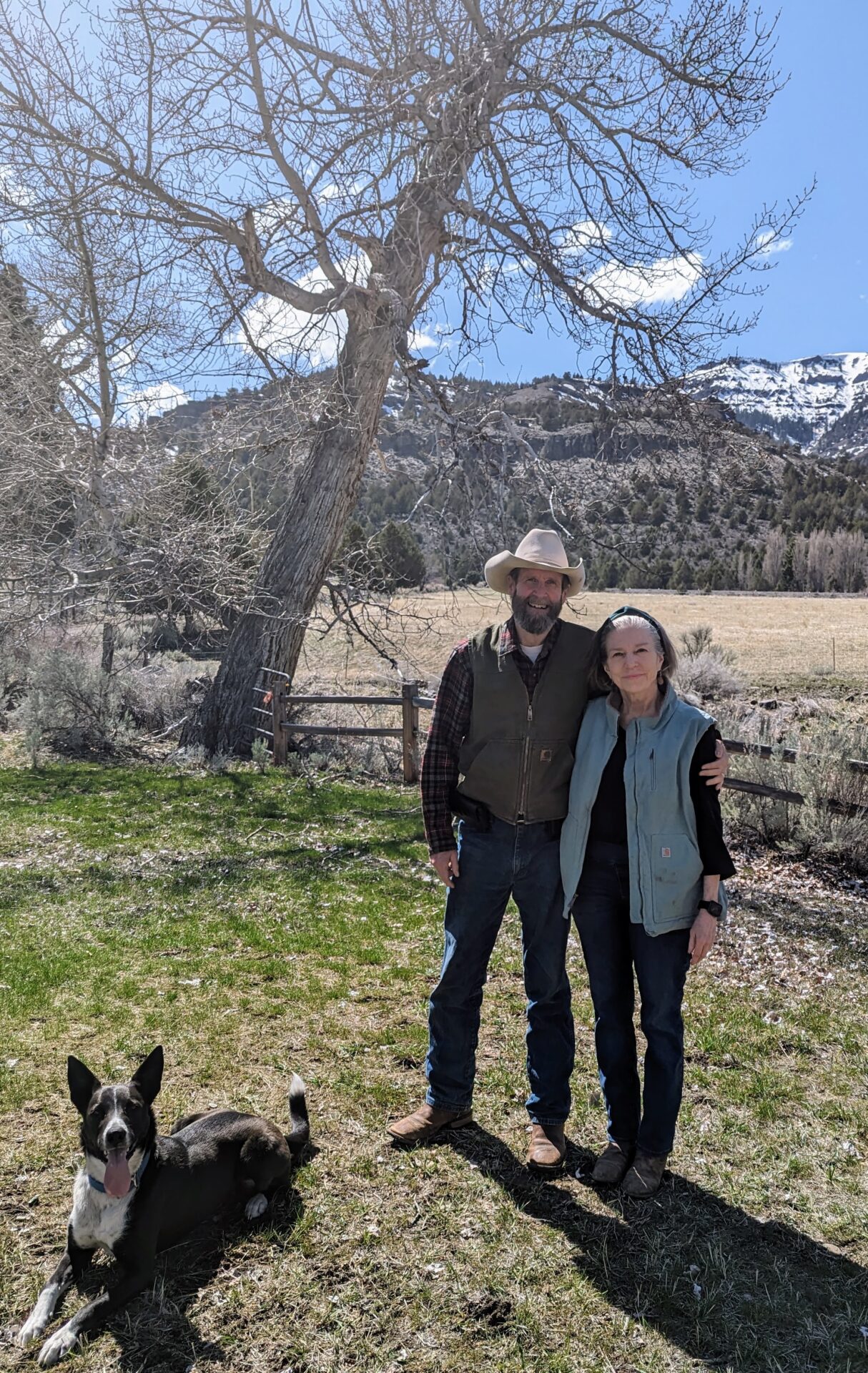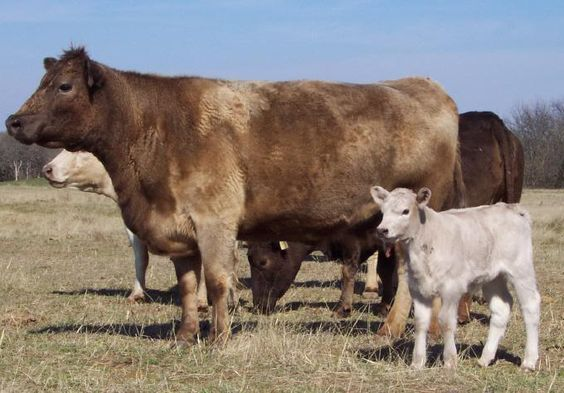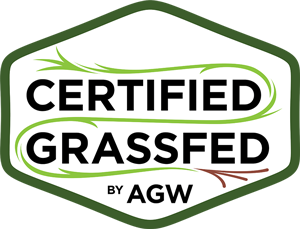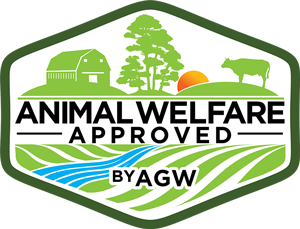
The Holding Family
Hunter and Anne Holding are the founders of Holding Ranch. Hunter’s family owned a dairy farm in upstate New York, but he always wanted to raise beef cattle. In the early 1990s, on their ranch in Lafayette, the Holdings put together a small registered Black Angus herd made up of some of the world’s best genetics (Tehama Bando 155, Wehrmann’s OM26) and sold bulls to commercial operations. The progeny from our first females went on to become the foundation for our grass fed beef herd.
The Holdings
In 1995, Hunter and Anne moved to a small ranch in Lafayette. They formed a non-profit education organization to help introduce children, from all walks of life and with differing abilities, to farm life and chores to help them improve their interactions with other living creatures and the earth.
Anne sold free-range, organically-fed eggs at the ranch for years to help support the work of the non-profit. Hunter also started selling grass-fed and finished beef at the ranch, then became the first grass-fed beef vendor at the Walnut Creek Farmer’s Market in 2005. Demand for the beef took off, and in the next two years we began selling at farmers markets in San Francisco, San Mateo, Menlo Park and Pleasanton, in addition to local food stores.
By 2008 we couldn’t produce enough cattle to meet beef demand on our owned and rented land base in Contra Costa County, and we moved the operation to bigger ranches in the North State (first to Siskiyou County, then to the current Modoc County location). Through all the challenges with pasture, irrigation and increased competition, we have maintained our vision for providing the cleanest grass-fed product possible from humanely-treated cattle on holistically managed pastures direct to consumers. We believe strongly in the holistic management and regenerative agriculture movement (the Jefferson Center for Holistic Management – a Savory Global Network hub is right down the road), and we enjoy bringing that story to our customers along with the product we raise according to those principles.

The Holding Family
Hunter and Anne Holding are the founders of Holding Ranch. Hunter’s family owned a dairy farm in upstate New York, but he always wanted to raise beef cattle. In the early 1990s the Holdings put together a small registered Black Angus herd made up of some of the world’s best genetics (Tehama Bando 155, Wehrmann’s OM26) and sold bulls to commercial operations. The progeny from our first females went on to become the foundation for our grass fed beef herd.
Our Vision
In 1995, Hunter and Anne moved to a small ranch in Lafayette. They formed a non-profit education organization to help introduce children, from all walks of life and with differing abilities, to farm life and chores to help them improve their interactions with other living creatures and the earth.
Anne sold free-range, organically-fed eggs at the ranch for years to help support the work of the non-profit. Hunter also started selling grass-fed and finished beef at the ranch, then became the first grass-fed beef vendor at the Walnut Creek Farmer’s Market in 2005. Demand for the beef took off, and in the next two years we began selling at farmers markets in San Francisco, San Mateo, Menlo Park and Pleasanton, in addition to local food stores.
By 2008 we couldn’t produce enough cattle to meet beef demand on our owned and rented land base in Contra Costa County, and we moved the operation to bigger ranches in the North State (first to Siskiyou County, then to the current Modoc County location). Through all the challenges with pasture, irrigation and increased competition, we have maintained our vision for providing the cleanest grass-fed product possible from humanely-treated cattle on holistically managed pastures direct to consumers.

What Makes Us Special
Holding Ranch is located in Surprise Valley, CA, which parallels the California-Nevada border from Oregon to Lower Alkali Lake, 50 miles to the south. It encompasses three other major seasonal lakes, Upper Alkali Lake, Middle Alkali Lake, and, in the extreme northeastern corner of the state, Cowhead Dry Lake.
These wetlands are filled after wet winters by water draining off the eastern slopes of the Warner Mountains. Agricultural fields (mainly alfalfa) and pastureland cover the valley floor west of the lakes, and most of the bird habitat of Surprise Valley is restricted to private lands.
(courtesy: Audubon Society: https://www.audubon.org/important-bird-areas/surprise-valley )
Holding Ranch is located to the west of Middle Alkali Lake up against the Warner Mountains. Soldier Creek runs out of the Warners through the Ranch year-round in wet years. Irrigation for the pastures on Holding Ranch comes from Soldier Creek, and the Creek also provides excellent groundwater for our hay fields. Surprise Valley has excellent soils thousands of feet deep created by millenia of erosion out of the Warners, and these are the soils on Holding Ranch. Our forage production is also helped by the longer growing season in Surprise Valley compared to the rest of Modoc County west of the Warners.

In April the pastures begin their rapid growth, and we end winter hay supplementation. Calving begins, and the mother/calf pairs benefit from the lush pastures. In addition to happy cattle, Spring brings a wonderful array of new wildlife to the ranch. Each year, pairs of Canadian Geese return to hatch and raise their goslings at the ranch. After that, as if on cue, Sandhill Cranes come to oversee the first calves.
We are lucky to live in such a rural area. Bald and golden eagles, and red tail hawks frequently fly over the yard and pastures. Deer and their fawns co-habitate with us as well.

During our 2010 search for replacement herd bulls, we were introduced to Murray Grey cattle. They were touted as easy gainers on grass with moderate size and docile temperaments. We decided to buy two, and were pleased with the resulting calves.
When we butchered the calves two years later, we were amazed with the product, The meat was well-marbled, tender and had a fantastic flavor. As our Angus cows aged out we replaced them with Murray Grey heifers and our herd is now 100% Murray Grey.
Murray Grey cattle are an Australian breed developed in 1905 when a particular Shorthorn cow was bred to various Angus bulls and produced grey calves. In 1929, Helen Sutherland started a systematic program to produce these grey calves. It soon became apparent these cattle were efficient converters of feed that grew quickly and produced superior carcasses. These traits and their unique appearance resulted in great popularity. In 1962 fifty breeders banded together to form the Murray Grey Beef Cattle Society of Australia. Murray Greys grew to be the second largest breed in Australia and one of the fastest growing beef breeds in the United States.
Murray Greys vary in shades of gray from silver to black and are naturally polled. Because of their Angus heritage, they have dark skin pigmentation, and are not susceptible to skin or eye problems. They have proven to be hardy and adaptable to most climates. Murray Grey progeny are easily calved, nurse quickly, and grow well. A typical Murray Grey cow weans off a calf that is at least 50% of her own body weight at 205 days. The cows are excellent mothers with good udders. Bulls and cows are noted for their early maturity and high fertility.
The gentle nature of Murray Greys makes them easy to handle and adaptable to new environments. (courtesy: Murray Greys - The Natural Choice http://www.murraygreybeefcattle.com/ )
Since the inception of the Ranch, we have subscribed to the principles of treating our animals in a humane and mindful manner. We have studied Temple Grandin’s livestock handling methods. We believe that this is not only the right way to do things but that it also translates into a better qualify of meat and happier, healthier cows.
Our animals are raised on pasture their entire lives. One cannot rush the finishing of grass-fed animals. We typically harvest in late Fall depending on the pastures each year. Our beef are processed and inspected at a small family-run, USDA-inspected plant. The plant is “Animal Welfare Approved”. Our beef is dry-aged for approximately 21 days, then cut, wrapped and frozen and cuts are individually labeled.

Hunter is in charge of the cattle, pastures and irrigation. Anne still works full-time as a therapist (mental health) but helps out at night and on the weekends, as ranch wives do. Our daughter, Amanda, moved back up from Oakland several years ago to help us on the ranch. She works in the local schools and is also active in the local sustainable food movement. Our daughter, Kate, will help with distribution in the Sacramento and Bay Areas.





